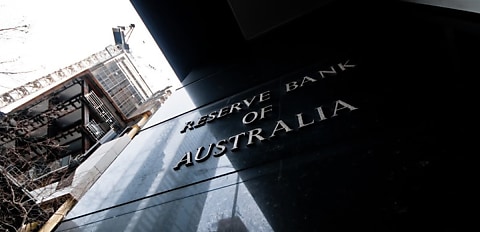The Reserve Bank of Australia (RBA) is expected to hold the official cash rate at 4.35 per cent today (6 February), according to bank economists.
The central bank's inaugural monetary policy meeting for the year is set to conclude today, after the monetary policy board meeting commenced yesterday as per the new regime.
The cash rate hold predictions come off the back of the lower-than-expected December quarter Consumer Price Index (CPI) dataset from the Australian Bureau of Statistics (ABS), which revealed annual inflation growth had slowed to 4.1 per cent, down from the 7.8 per cent December 2022 peak.
Westpac chief economist Luci Ellis stated the CPI results were “consistent with a softer set of data prints over recent months”, not only with regard to inflation, but the labour market and economic growth as a whole.
“All in all, we continue to anticipate that there will be no change to the RBA’s policy stance next week; however, given the Board’s sensitivity to upside surprises, it is unlikely that the RBA will entirely rule out further rate hikes in their post-meeting communications,” Ms Ellis said.
“We are forecasting a rate-cutting cycle to begin in Q3 2024, at a measured pace of 25 bps per quarter until Q3 2025, to a terminal rate of 3.10 per cent.
“Markets are on a similar page, now pricing in the first rate cut by Sep-24, two before Dec-24, and nearly four in total by Jun-25.”
Commonwealth Bank of Australia (CBA) head of Australian economics Gareth Aird said the major bank sees “no chance of any other outcome” other than a cash rate hold.
“The case to leave monetary policy on hold next week is stronger than at any point in the last two years,” Mr Aird said.
“The Q4 23 CPI indicated that more progress has been made in returning inflation to target than the RBA expected when it published its inflation forecasts in November. In addition, economic growth is slowing more quickly than the RBA anticipated.”
Mr Aird added that the RBA will “very much embrace” the inflation data printing beneath its expectations and while the pursuit of the 2–3 per cent inflation target band is not yet done, the “RBA is now on the home straight”.
ANZ executive director and head of Australian economics Adam Boyton said the December CPI has “cemented no change in rates”, however, the major bank will be focused on the post-meeting statement.
According to Mr Boyton, the major bank expects the RBA to “retain a tightening bias” in the post-meeting statement, although it should “also acknowledge the more broadly based slowdown in the economy evident since the December meeting and the lower-than-expected Q4 2023 CPI result”.
RBA commences with new meeting schedule
The February meeting marks the beginning of the RBA’s new process regime, as recommended in the RBA Review.
As a result of the recommendations set out in 'An RBA Fit for the Future', the RBA has reduced the number of monetary policy board meetings from 11 times per year to eight, and will hold a media conference at 3.30pm on cash rate decision days.
The statement of monetary policy will also be delivered by the full monetary board, and not solely the RBA governor (Michele Bullock).
Cash rate decision meetings will be spread over two days (with the February meeting having commenced yesterday afternoon and will continue today) with the outcome scheduled to be announced at 2:30 pm on the second day.
[RELATED: December CPI points towards February cash rate hold]

